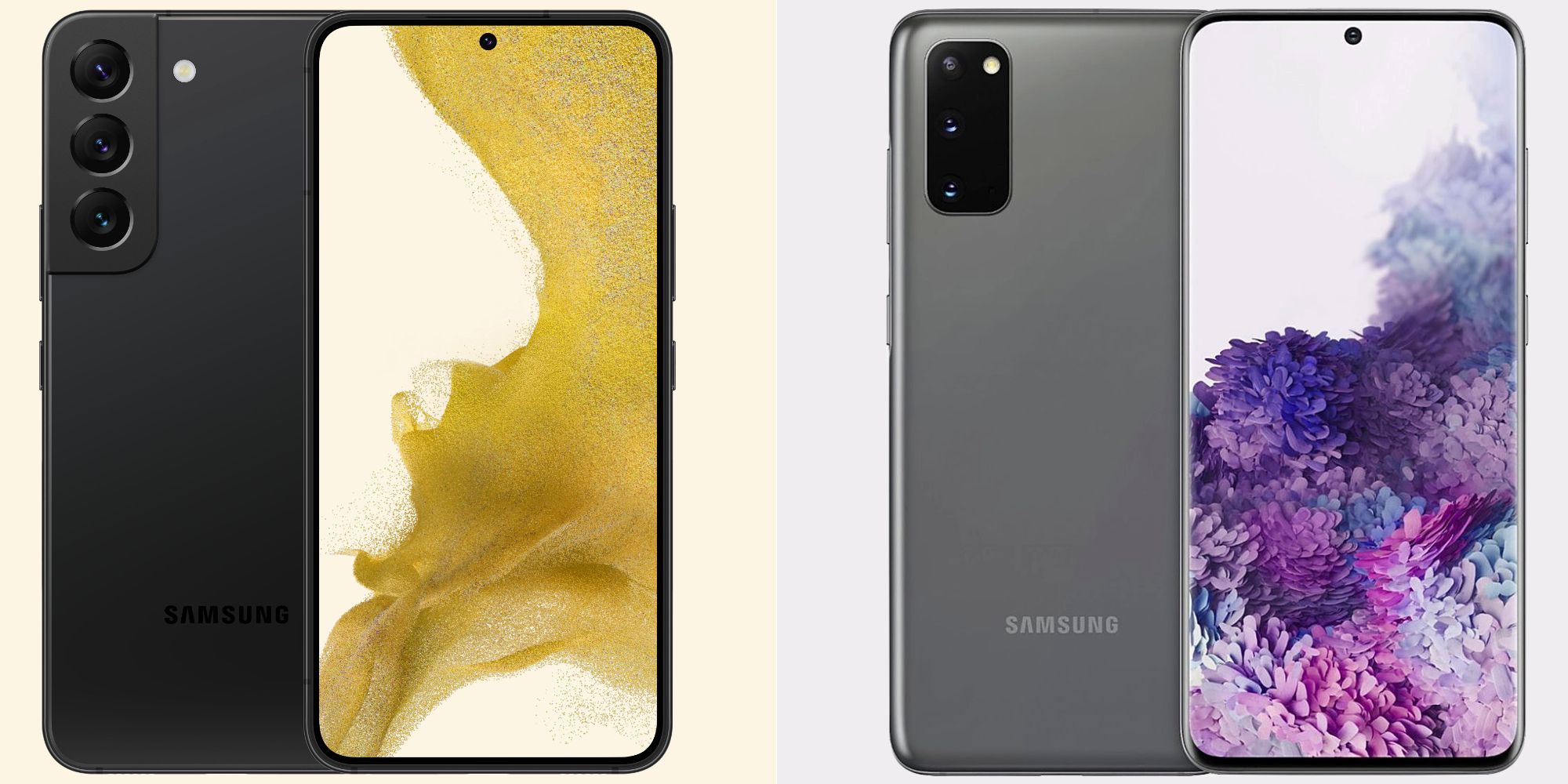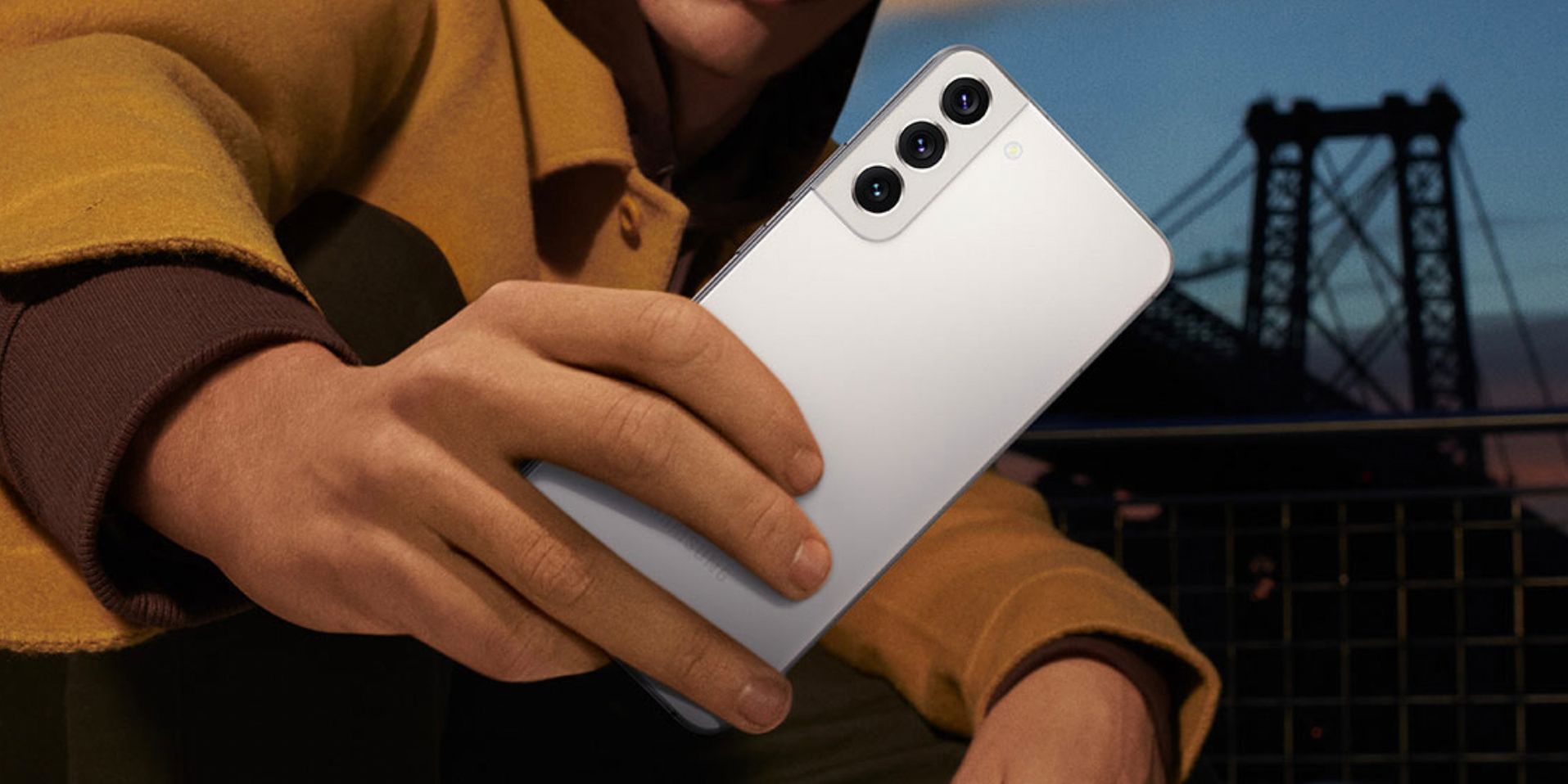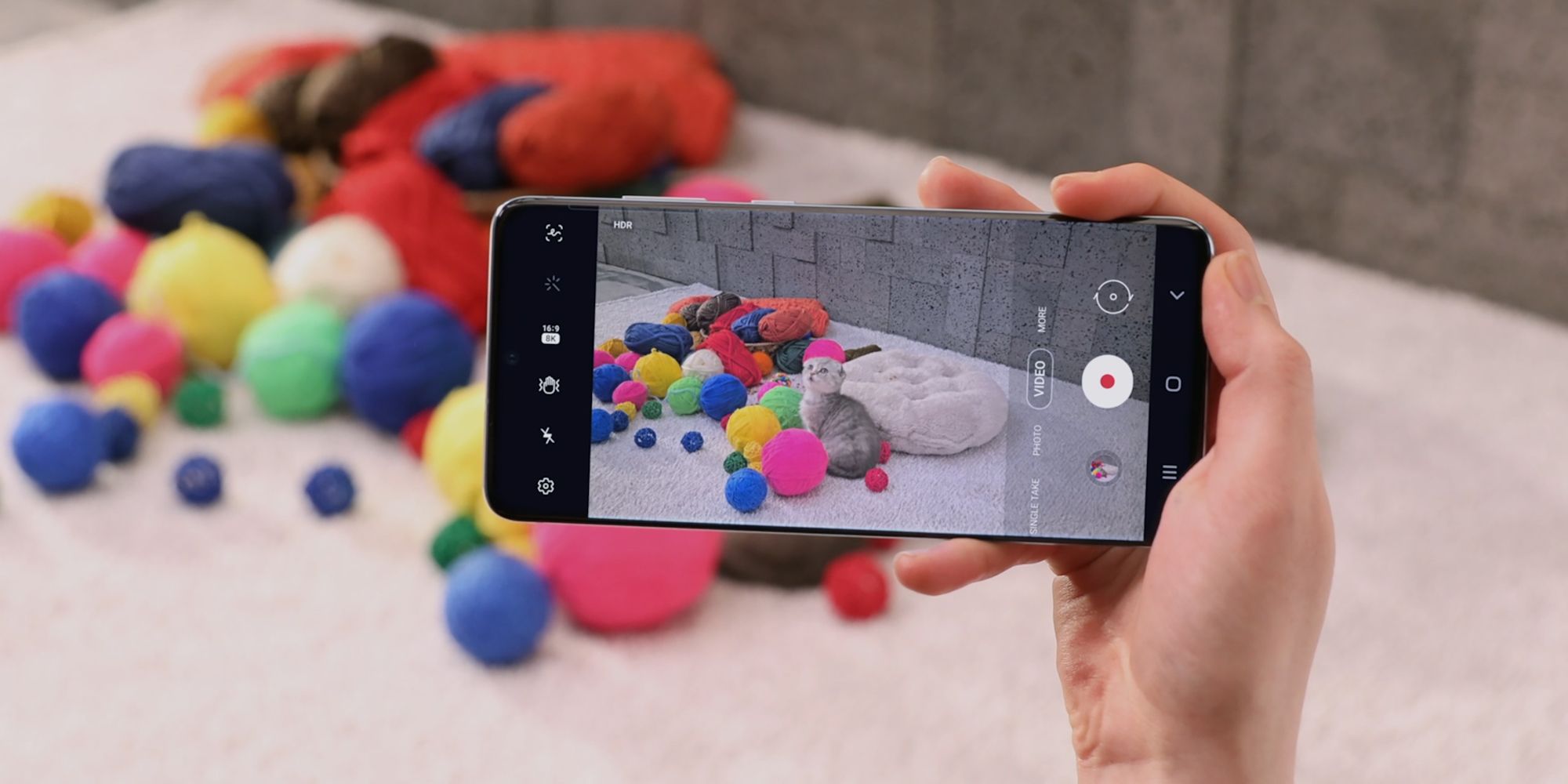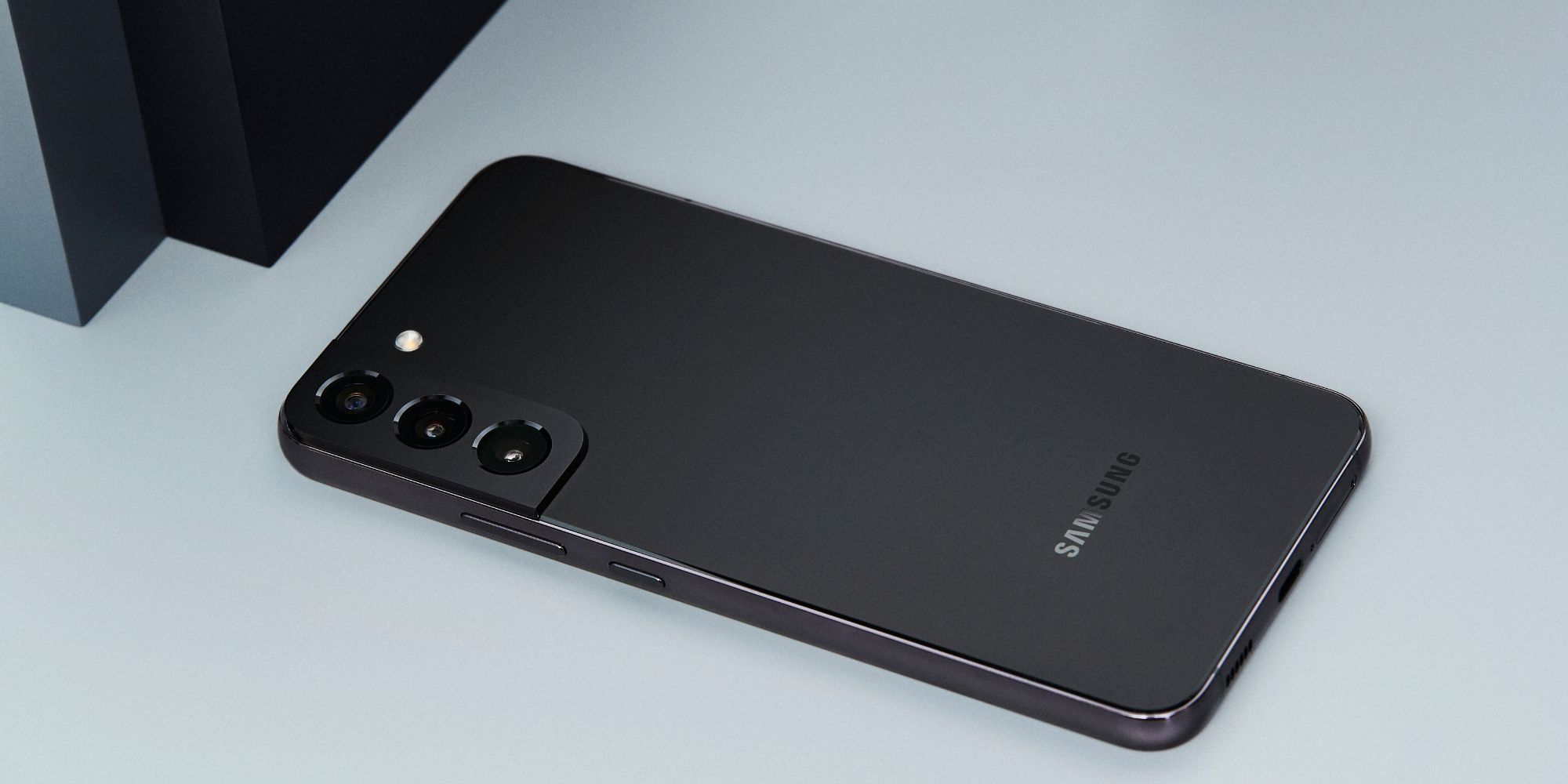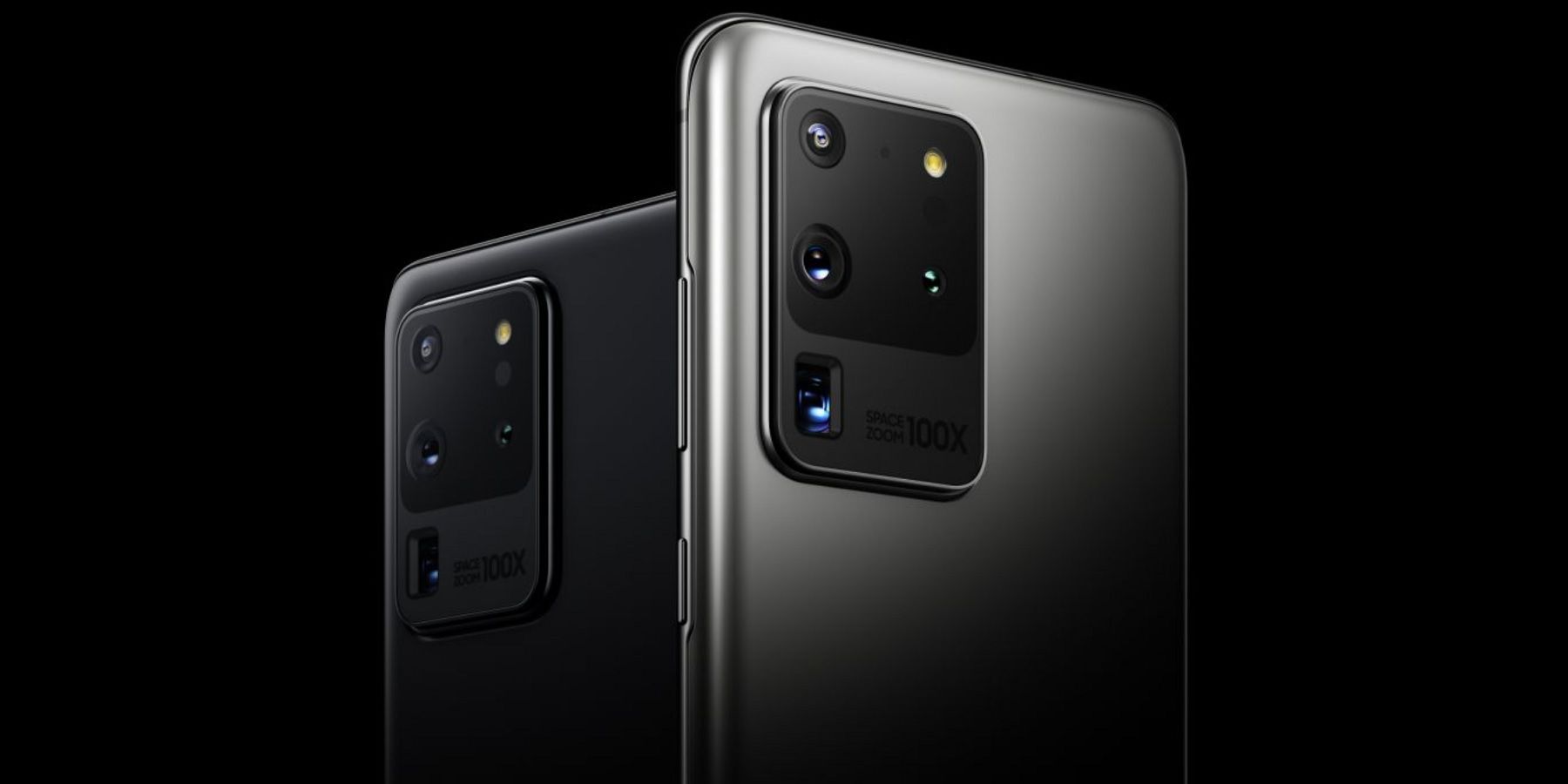The Samsung Galaxy S22 is one of the best Android smartphones you can buy today — but is it a worthy upgrade over 2020's Galaxy S20? The Galaxy S22 is a fairly modest upgrade over the Galaxy S21, with a better design, processor, and cameras. Predictably, it brings generational improvements over the Galaxy S20, but the answer may not be as straightforward as you think.
If there's one thing immediately noticeable between the Samsung phones, it's the design. While both phones have glass backs and aluminum frames, the S22 looks and feels considerably nicer. The contour-cut camera bump flows seamlessly into the frame, the matte glass back does a great job of hiding fingerprints, and the flat edges give it a more compact in-hand feel. That's not to say the S20 is a bad-looking smartphone, but the S22 certainly feels more refined.
Galaxy S22 Vs. Galaxy S20: Display & Performance
What's less of an immediate upgrade, however, are the displays. Despite there being two years between the phones, the S22 and S20 are remarkably similar in this regard. The Galaxy S22 ships with a 6.1-inch AMOLED panel, 2,340 x 1,080 resolution, 120Hz refresh rate, and up to 1,300 nits of peak brightness. The Galaxy S20 has a 6.2-inch AMOLED panel, 3,200 x 1,440 resolution, 120Hz refresh rate, and up to 1,200 nits of peak brightness. You can only run the 120Hz refresh rate on the S20 if using the same Full HD+ resolution as the S22, but you also have the option of switching to Quad HD+ if you don't mind stepping down to 60Hz (something the newer S22 isn't capable of). Both phones are rated IP68 for dust and water resistance.
That said, it doesn't take long for the Galaxy S22 to flaunt its newer hardware. Powering the S22 is Qualcomm's Snapdragon 8 Gen 1 processor. The Galaxy S20 has the older Snapdragon 865. The 865 is still a very good processor these days, but the Snapdragon 8 Gen 1 is better in every way. It has a smaller fabrication design (4nm vs. 7nm), a higher CPU clock speed, and a much faster GPU frequency. Things level out a bit on the memory front. The S22 has 8GB of RAM, the S20 has 12GB of RAM, and both phones have starting storage of 128GB. The S22 uses faster UFS 3.1 storage compared to UFS 3.0 on the S20, but only the S20 supports microSD cards for expansion.
Galaxy S22 Vs. Galaxy S20: Cameras & Battery
Things again shift in the Galaxy S22's favor when it comes to cameras. The S22 rocks a 50MP primary camera, 10MP telephoto camera, and 12MP ultra-wide camera. The S20 has a 12MP primary camera, 64MP telephoto camera, and 12MP ultra-wide camera. Not only does the 50MP primary camera mean the S22 takes sharper photos than the S20, but it has other upgrades, too. It has a larger sensor size and improved pixel size, thus resulting in better low-light photos. The 50MP primary camera also means the S22 can record 8K video without having to crop in too much — something that's a regular annoyance having to record 8K video on the S20's 64MP telephoto camera. However, the selfie camera is the same across both phones, with each one offering a 10MP sensor.
Also similar is the battery situation. The Galaxy S22 has a 3,700mAh battery, and the S20 has a slightly larger 4,000mAh battery. Charging options are identical between the two — including 25W wired charging, 15W wireless charging, and 4.5W reverse wireless charging. However, the S22 doesn't come with a charger, unlike the Galaxy S20. Another big advantage of the S22 is its software support. The Galaxy S20 shipped with Android 10 and has since been updated to Android 13. However, it won't receive any additional OS upgrades after that. In comparison, the Galaxy S22 shipped with Android 12 and is promised four years of major Android updates.
So, does all of that make the Galaxy S22 worth upgrading to from the Galaxy S20? The Galaxy S22 is objectively a better phone thanks to a newer processor, camera system, and longer software support. It's a decent upgrade for S20 owners who have some cash to burn and are itching for something new, but it's also not a phone you have to rush out and upgrade to this very second.
Galaxy S20 Vs. Galaxy S22 Plus
For Galaxy S20 users looking for a big-screen upgrade, it's worth considering the Galaxy S22 Plus. The S22 Plus sits in the middle of the S22 series, right between the Galaxy S22 and Galaxy S22 Ultra. The phone features a much larger 6.6-inch display that offers a higher 1,750 nits of brightness, making it better equipped to be used outdoors. The remaining display specs remain the same, including the FHD+ resolution and 120Hz refresh rate.
Another key advantage of the S22 Plus is its bigger 4,500mAh battery. It also comes with 45W fast charging, which means users will be able to top up their device much quicker, provided they use a compatible charger. The S22 Plus is on par with the smaller S22 in the processor, memory, and camera departments. The S22 Plus is a better upgrade for Galaxy S20 users given the larger display, better battery life, and faster charging, but users will need to pay an extra $300 for these features. While the Galaxy S22 starts at $699, the S22 Plus starts at $999.
Should You Upgrade Your Galaxy S20 In 2023?
The Galaxy S20 is now a three-year-old Samsung phone. It still has a lot to offer, including a high-resolution, 120Hz AMOLED display, an IP68 water-resistance rating, and a large 4,000mAh battery with fast wired and wireless charging. The Galaxy S20 even features a microSD card slot, a feature that's missing on most modern flagships. However, the Galaxy S20 is starting to show its age. The Snapdragon 865 is an outdated chip, and modern processors promise better performance and battery life. The cameras are not as advanced as the Galaxy S22 and Galaxy S23 either.
Additionally, Samsung will no longer provide Android updates for the Galaxy S20, which means it won't be receiving Android 14. The good news is that the phone will receive security updates until 2024, which means owners can hold off upgrading for a little longer. While upgrading to the Galaxy S23 makes sense in 2023, users who aren't in a hurry can wait until Samsung launches the Galaxy S24.
Source: Samsung

